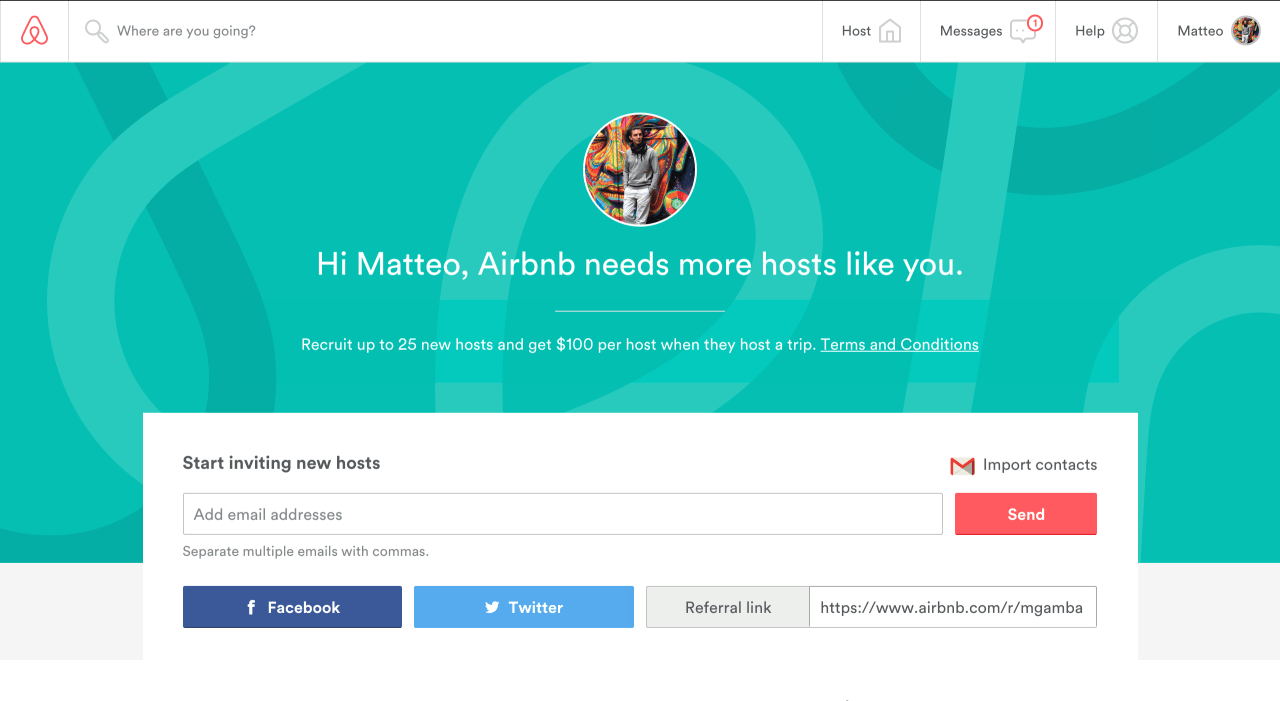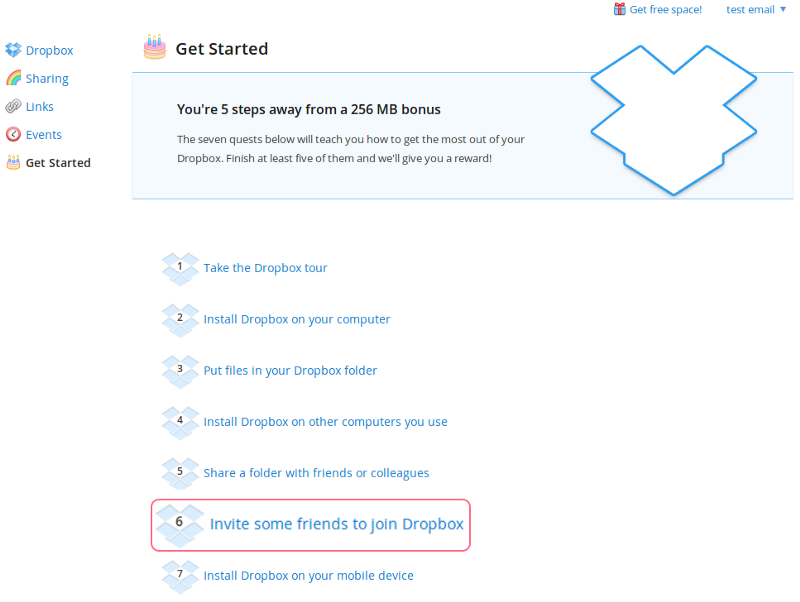80% of all B2B and B2C purchases involve some type of word-of-mouth recommendation during the purchase cycle.
And, according to research by The New York Times, 65% of new clients stem from referrals.
These numbers point to one thing: Referrals are a powerful source of new customers.
However, there’s a process to the whole thing. You can’t just randomly ask customers to recommend your product. It could be off-putting and may lead to you losing their business.
When to ask for referrals
When is the right time to ask your customers to refer you?
Before we get into that, let’s look more at how word-of-mouth and referral marketing works:
- People are wired to share information they trust
- We all gain social validation and gain respect when we share valuable information
- This builds our desire to share any information that people may find helpful
When users find a service or product valuable, trustworthy, and relevant to their friends and family, they’ll naturally have the desire to share it.
Why? For the social recognition and the validation of sharing valuable information.
An introduction to referral marketing
At its simplest, referral marketing is the intentional acquisition of customers via solicited referrals.
It can be as basic as informally asking for a referral. For example: “If you like our coffee, tell your friends, share this on Facebook or Tweet about us.”
All of that is referral marketing. In this broad sense, any marketing process that requires consumers to speak to other consumers is referral marketing.
But, anyone can talk about anything they consider worthwhile at any point. Referral marketing is deliberately asking for customer referrals.
How does referral marketing work?
As we just went over, referral marketing can work by informally requesting customers happy with your service to share your business.
However, a referral program is a structured way of requesting referrals from your customers. It’s a sustained, deliberate system of asking for and encouraging referrals.
Systems like this usually involve some relevant incentive structure.
A familiar example is Dropbox’s referral program, which involves the customer referring their friend to use Dropbox’s service for extra storage for both them and their friend.
The customer already finds Dropbox essential for storing their data, and would naturally recommend it to anyone else they know who needs the same service.
But with an incentive of extra space, they’d be on the lookout for someone that needs the service, since the extra storage space is valuable to them.
P.S. Check out Canny’s referral program here. Share Canny with your network and earn up to $1,000 per referral.
When to ask for referrals
You want to only ask for a referral when you’re sure that your customer is happy with your service.
You don’t want to seem like a lead-starved sales rep who’s through with them and eager to move on to their connections.
With that said, there are 3 phases to asking for referrals from customers:
1. Onboarding phase
When you’re dealing with a new customer, you want to ask for a referral after you’ve solved a huge problem with your offer.
Once you have a great onboarding process, you can even ask for referrals during sign-ups:
- Collect necessary advocate information. This means understanding who is referring people to your business in the first place.
- Inform the advocate about the rewards of referring people to your brand.
- Give your advocates access to the necessary tools (referral links, informational materials about your products, etc) needed to refer people to your business.
This is the onboarding process PayPal used in its early days, according to Elon Musk
The result was 100,000 customers in its first month. Their onboarding process was simple: get rewarded for opening up an account and for referring anyone.
2. Retention phase
Customer retention is extremely important in building a powerful referral system. Research even shows that 83% of satisfied customers are willing to recommend services and products to their network.
But you have to know who your satisfied customers are first and the right moment to ask for a referral.
To identify your satisfied customers you can use a feedback tool (like Canny!) that will enable you to see your most engaged, active users.
By building that relationship, you can get a sense of who your strongest advocates would be when it comes to giving referrals.
The next step would be to reach out to these active users.
However, when you’re dealing with some of your most loyal customers, here’s when you should ask for referrals:
- After you’re certain that they’re happy with your service
- When you’re certain that they cannot think of a way you can satisfy them better
When you’ve ensured the above, you can then gently suggest a referral. Mention that if they have a colleague or friend in need of the same service, you’d appreciate if they spread the word.
Take the Airbnb referral program for example. It selectively asks for referrals from loyal customers that are in its retention phase:

Their process is simple. After signing up for the program as a loyal customer, all the advocate has to do is log in, import Gmail contacts, and Airbnb will smart-recommend a couple of contacts they feel are relevant and interested in their service.
Then the customer can send them an email using Airbnb’s template.
3. Using NPS
A Net Promoter Score survey (NPS) is an age-old method used by businesses to gauge if a customer would promote the brand to a colleague or friend.
They look something like this:
“On a scale of 1 to 20, how likely is it that you’ll refer us to a colleague or friend?”
Now, say your product gets an above-average of 19/20 or 20/20 for the NPS survey for many customers.
It tells you you’re ready to launch your referral program as your customers are happy with your service and will recommend it.
However, before you ask for referrals, collect customer feedback to find out your customer’s experience with your business and what would make them become a referral partner.
When to ask for referrals: Using Dropbox as a case study
With referrals, Dropbox rose from 100,000 to 4 million users in a year and 5 months.
Here’s when they asked for referrals: During the onboarding phase.
They built their referral process right into their onboarding system. The sign-up process had six steps, with the last step stating, “Invite your friends to join Dropbox.”
Referral marketing is crazy effective, but knowing when to ask customers for referrals can make or break the system.
One of the best ways to know which advocates to ask for referrals is to use a feedback tool that’ll help you identify your most active users who are satisfied with your offering.








